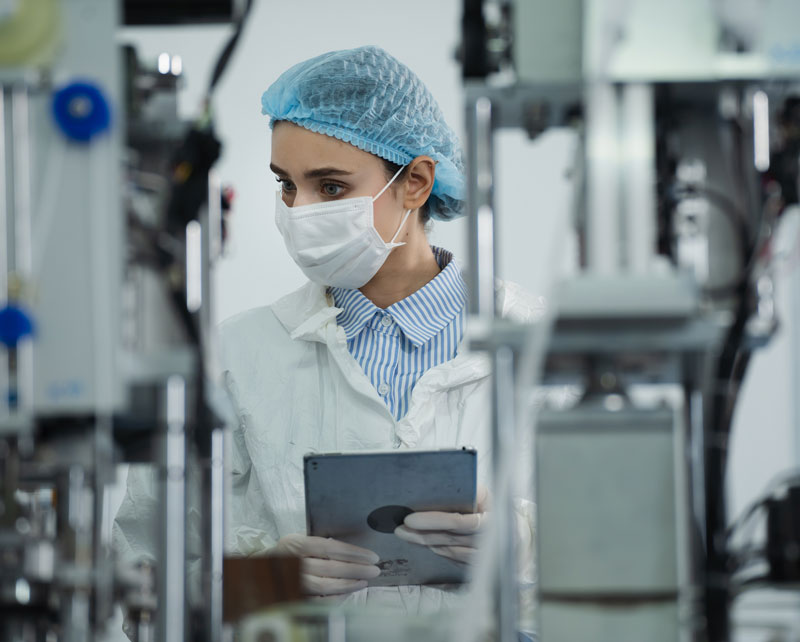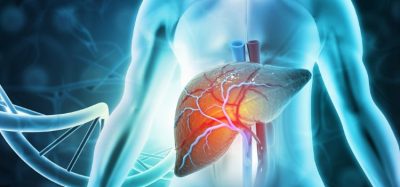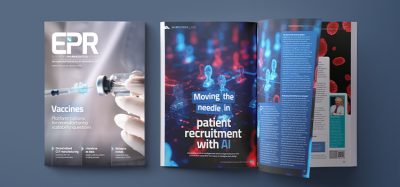Process analytics for the new era of continuous RNA manufacturing
Posted: 24 March 2024 | Dr Edita Botonjic-Sehic | No comments yet
In this article, Edita Botonjic-Sehic, Head of Process Analytics and Data Science at ReciBioPharm, examines the need for a digitally controlled continuous manufacturing process to correct the shortcomings of the current standard of batch processing. She highlights the critical role in-line process analytic technologies (PAT), automation and real-time data analytics will play in addressing today’s RNA manufacturing challenges.


RNA therapeutics represent a revolutionary option for the treatment of a wide array of indications, from rare diseases and neurological disorders to various cancers.1 Although the RNA therapeutic space initially saw slow growth following the launch of the first RNA therapy in 1998, the COVID-19 pandemic launched the modality into the spotlight.2
With growing clinical and commercial success, the number of RNA technologies in development from pre-clinical to pre-registration has increased rapidly in the last four years, with 976 therapies currently in the pipeline.1 The rising need for innovative therapy options and protective measures against potential future pandemics has driven the demand for improvements in RNA manufacturing, particularly in terms of speed and quality.
A growing desire for continuous manufacturing
Biologics manufacturing has traditionally relied on batch manufacturing, with intermittent production steps conducted in a defined order to produce a specific quantity of a drug. Although batch manufacturing is well established and many biopharma companies have regulatory approval to produce their therapeutics based on these techniques, it is quickly becoming a process bottleneck.
With manufacturing potentially taking weeks to complete and scaling production being prominent challenges with batch production, the biopharma industry is looking to continuous manufacturing as a solution. Through process intensification, continuous manufacturing offers several benefits as compared with batch manufacturing. These are:
- reduced manufacturing costs
- accelerated production times
- minimised risk of human error
- reduced scale-up investment (scaling by adding production days)
- improved product quality.
Recognising these advantages, regulatory entities such as the International Council for Harmonisation (ICH) and the US Food and Drug Administration (FDA) are encouraging the biopharma industry to adopt continuous manufacturing processes.3-6 In 2023, the FDA funded a project to enable fully integrated continuous RNA platforms.7
Despite the benefits offered by continuous manufacturing and encouragement from regulatory bodies, it is yet to be widely adopted in commercial biologics production. For continuous bioprocessing to become a reality, developers and manufacturers must first address various industry‑specific technological, organisational, economic and regulatory barriers and apply a robust strategy to implementation. This includes ensuring there are precise and robust controls throughout the operation.
The critical role of PAT in continuous RNA production
A vital aspect in the development and manufacturing of all drugs – including RNA therapeutics – is the collection of data to evidence the quality of the product and demonstrate that critical quality attributes (CQA) are met. This is mandated by regulatory bodies and is needed to ensure the drug is effective and safe for patients.

Developers and manufacturers will identify and define appropriate CQAs (broadly corresponding to the product’s quality and safety) as well as their target ranges. Understanding the biologics’ properties and how changing process parameters could affect them throughout production necessitates suitable, fit-for-purpose analytical methods.
In traditional batch manufacturing of biologics, many of these assays will be conducted offline, where samples are manually retrieved and assessed in a remote laboratory. Some offline assays can take days to complete, including those needed to produce the purity profiles for RNA therapeutics.
A critical component of continuous manufacturing is the enhancement of analytical technology capabilities and real-time data analytics through online, in-line and at-line PAT, enabling in-process CQA monitoring and measurement in real time. By utilising innovative technologies to move assays online, in-line or at-line, developers can reduce manual labour with automation, minimise time-consuming manual sampling steps and eliminate the time taken transporting samples to external laboratories. As a result, what would usually amount to two weeks of offline analyses could be reduced to a single day.
Process analytical technology: applications and opportunities for pharma
As well as accelerating timelines for analysis, the addition of cutting-edge analytical technologies as part of the continuous manufacturing process can provide many other benefits in RNA manufacturing. These include:
- Reducing waste
With greater control over the production process, batch failures can be minimised. By collecting precise volumes, the number of samples pulled from the process for analysis to eventually go to waste would also be drastically reduced. Additionally, with a greater understanding of the kinetics of the in vitro transcription (IVT) reaction, the precise concentration of components needed can be added, ensuring material is not wasted.
- Minimising labour needs
By reducing the time spent analysing samples, operator needs can be significantly reduced with in-line analytical processing. This would contribute to the reduction of full-time equivalent employees needed for continuous manufacturing as compared with batch processes.
- Lowering risk
Offline testing has the potential to introduce risk through contamination or damage, particularly as a result of operator handling when taking and analysing samples and moving between manufacturing and analytical suites. By eliminating offline quality control (QC) in favour of in-line or online alternatives, where all process and QC testing occurs in a single suite, the manufacturing process is uninterrupted and the risk of human error can be reduced.
Adopting next-generation technologies
Integrating cutting-edge analytical technologies into continuous manufacturing processes will further enable RNA therapeutic developers and manufacturers to intensify drug production and prepare for the future.
As the RNA therapeutic space is relatively new, implementing continuous manufacturing is likely to be less complex than for traditional biologics
By utilising data analytics through machine learning (ML) and artificial intelligence (AI), RNA therapy producers could develop models to enable real-time monitoring and control across the entire processing line. An in silico model of real-world events will allow developers and manufacturers to proactively identify when there is a risk that CQAs will fall outside of defined ranges. It will also enable RNA producers to determine trends that could lead to CQA deviations and allow them to adjust parameters accordingly in process development. As a result, risks of failure can be avoided, helping to further reduce potential waste and attain a higher quality product.
Realising the benefits of in-line PAT, automation and real-time data analytics as we move towards the agile process needs of Industry 5.0 will require drug producers to rely on robust strategies to implement continuous manufacturing.
Strategies for implementing continuous RNA manufacturing PAT
For traditional biologics like monoclonal antibodies (mAbs), the shift away from already established batch processes to continuous manufacturing requires significant investment, particularly in changing infrastructure. However, as the RNA therapeutic space is relatively new, implementing continuous manufacturing is likely to be less complex than for traditional biologics, as developers can design and build continuous manufacturing lines from the ground up. To achieve this, the approach taken must still be carefully considered, ensuring quality by design (QbD) to stay compliant with regulatory requirements.
Developing a continuous manufacturing process that leverages in-line analytical technologies, automation and real-time data analytics, and that is built for flexibility and with the future in mind, will involve the following:
1) Identifying next-generation equipment
Initially, RNA developers and manufacturers should aim to develop a baseline continuous manufacturing process. At this time, they should also identify next-generation PAT tools that could be integrated online or in-line to provide equal or better monitoring and control compared with the current standard.
2) Planning for automation
Accelerating manufacturing timelines and reducing labour demands via continuous manufacturing will rely on RNA developers and manufacturers striving to automate as many processes as possible, including analytical testing. This necessitates the development of an automation architecture, allowing the collection of data in a single framework, which can then be used for model development.
3) Developing a modelling infrastructure
By collecting an abundance of data using PAT for constant monitoring and real-time RNA product characterisation, the data generated can be used to recreate the real world in a digital environment. These models will provide greater understanding and control over the process, helping to attain QbD in process development.
Additionally, models could be developed for multiple different types of constructs. With multiple models produced per unit operation, developers and manufacturers can provide flexibility as the RNA space evolves.
Looking to the future of RNA manufacturing
With rising demand for innovative RNA therapeutics, continuous manufacturing represents a solution to the pitfalls of traditional batch production, accelerating processes, minimising risk and improving quality.
As we move towards Industry 5.0, developers and manufacturers must consider how their continuous manufacturing approaches will enable future flexibility by effectively leveraging next-generation technologies.
A robust approach to incorporating analytical technologies, automation and real-time data analytics will allow RNA producers to adopt continuous manufacturing to streamline timelines while ensuring regulatory compliance through greater process control.
About the author
Edita Botonjic-Sehic
As head of process analytics and data science at ReciBioPharm, Dr Edita Botonjic-Sehic provides technical insight and strategic conceptualisation and implementation of process analytical technology (PAT), data engineering and data science for continuous bioprocessing. Edita has more than 20 years of experience in advanced PAT and data science techniques improving manufacturing concepts in pharmaceutical and therapeutics development. Prior to joining ReciBioPharm, she was a director of process analytical technology at Pall Life Sciences and Cytiva.
References
1. American Society of Gene + Cell Therapy Landscape Report Q3 2023. [Internet] American Society of Gene + Cell Therapy. 2023. [cited2024Jan]. Available from: https://asgct.org/global/documents/asgct-citeline-q3-2023-report.aspx
2. Kim YK. RNA therapy: rich history, various applications and unlimited future prospects. Exp Mol Med. 2022; 54(4):455-465.
3. Chatterjee S. FDA Perspective on Continuous Manufacturing. IFPAC Annual Meeting, Baltimore, MD, USA, January 2012. [Internet] US Food and Drug Administration. 2012. [cited2024Jan]. Available from: https://qbdworks.com/storage/2014/06/Continuous-Manufacturing-FDA.pdf
4. ICH Expert Working Group. Q13 Continuous Manufacturing of Drug Substances and Drug Products. [Internet] 2018 [cited 2023Dec] Available from: https://database.ich.org/sites/default/files/Q13_EWG_Concept_Paper.pdf
5. Lee SL. Current FDA Perspective for Continuous Manufacturing. MIT-CMAC 2nd International Symposium on Continuous Manufacturing of Pharmaceuticals, Cambridge, MA, USA, 26–27 September 2016. [Internet] US Food and Drug Administration. 2016. [cited2024Jan]. Available from: https://qbdworks.com/wp-content/uploads/2014/06/FDA-on-Continuous-Manufacturing-Lee-2016.pdf
6. Nasr M, Krumme M, Matsuda Y, et al. Regulatory Perspectives on Continuous Pharmaceutical Manufacturing: Moving From Theory to Practice. J. Pharm. Sci. 017; 106(11):3199–206.
7. Nelson M. MIT receives $82m from FDA for continuous mRNA manufacturing platform. [Internet] Bioprocess International. 2023. [cited2024Jan]. Available from: https://bioprocessintl.com/bioprocess-insider/deal-making/mit-receives-82m-from-fda-for-continuous-mrna-manufacturing-platform/#:~:text=MIT%20receives%20%2482m%20from%20FDA%20for%20continuous%20mRNA%20manufacturing%20platform&text=With%20%2482%20million%20in%20FDA,fully%20integrated%20continuous%20mRNA%20platform
Issue
Related topics
Analytical techniques, Continuous Manufacturing, Data Analysis, PAT, RNA, Therapeutics
Related organisations
International Council for Harmonisation (ICH), US Food and Drug Administration (FDA)









